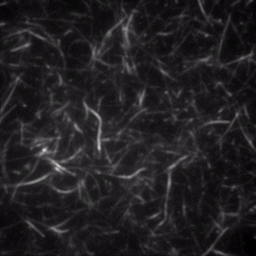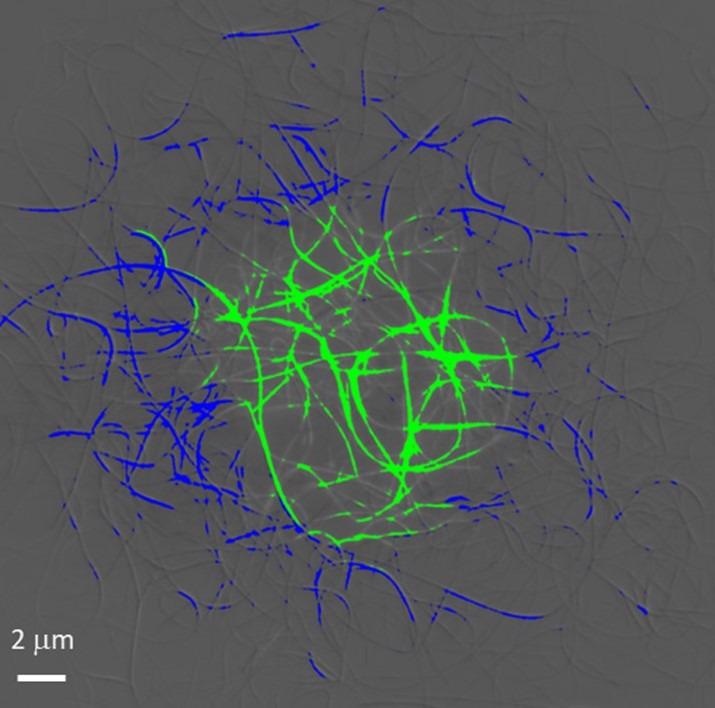AZoOptics speaks to Professor David Amabilino about recent breakthrough research looking at how self-made fibers guide molecular movement using light. Amabilino discusses what this means for the development of sustainable light sources in the future and how it could also guide drug therapy research.
Can you tell the readers a little bit about yourself and what you do at the University of Nottingham?
I am a chemist with a background in the synthesis and characterization of organic materials. I am really interested in any research into the capture and transmission of energy in materials, mainly organic ones. Current research is on gels for energy applications, organic solar cells, and organic conductors. I am moving to the Materials Science Institute of Barcelona (ICMAB-CSIC) at the end of October to continue my research there.
How did you begin your research into synthetic self-made fibers?
I have been interested in the way molecules come together to make materials for more than 20 years, and, with my collaborator Lluisa Perez-Garcia, we have been looking at some molecules that form gels, with the idea that they could be used in medicine.
How can self-made fibers guide molecular movement?
We saw that the fibers we were making were long and flat, especially ones made by Mario Samperi (the postdoc who drove the project forward), and thought to ourselves, well, that kind of looks like a path, could we not get something to go along it? It is not that easy as you need attractive forces to make the traveling molecule stick, but not so hard that it will not budge. Here the forces we use are between oppositely charged molecules that are both quite oily, so they will not dissolve in the water that is a big part of the liquid we use.

A video-TIRF measurement showing the movement of traveller molecules under irradiation. Image Credit: SLIM Service/University of Nottingham
How could this discovery pave the way for unique ways to use light in a sustainable way?
We believe the sustainable implications are important. First, we are carrying out work with light because we are moving a molecule from one place to another, and we have used something that is readily available to do that. It shows a different way to capture energy.

Difference TIRF micrograph showing the areas with depleted and enriched traveller molecules. Image Credit: SLIM Service/University of Nottingham
We are generating a gradient of concentration of molecules with light, and that could, in principle, be used to perform work in its own right.
In biological systems, such as our cells, gradients are used to do work. We do not know how to do that yet with our system, but this research is enabling the first step.
What other areas could this research be applied to?
We are really interested in drug delivery and using light for certain therapies. Using light to encourage the release of a drug at a specific location is useful.
Did you experience any challenges during the study and how were they overcome?
It was tough to understand what was going on with the molecules, as we did not understand what we were seeing or why we were seeing it. There was no precedent here, so there were a lot of control experiments and test experiments to understand how the switching molecule worked and how it affected the light coming out of the traveler, for example. But we had a great team with lots of different expertise, and especially Robert Markus at the SLIM service in Nottingham who was great at helping use realize our experiments on the microscope.
Is there potential for this technology and research to be used on a wider scale, potentially revolutionizing several industries?
I believe that when there is a new effect seen, there is always great potential and things we have not even considered possibly. To me, the main challenge is to interface with this system so that we can use it to perform a specific task. It does not use much energy but the goal we are working on is how to reset the system.

A sequence of TIRF micrographs showing the light-induced dynamics in the gel system. Image Credit: SLIM Service/University of Nottingham
What are the next steps for the project?
Our next steps are to make the system directional and reversible, like molecular machines in our cells. That is a big challenge, but we have lots of ideas of how to do that.
Do you have any future research that you are able to discuss?
Sure, this system is one of the millions you could think of where a soap-like molecule is combined with a fluorophore and a molecular switch in a massive number of combinations. We are carefully looking at which combinations could lead us to the next step for our travelers. But an evolutionary-type approach might work better, where we feed lots of different combinations at the same time and find the “fittest”. Developing the tools to study those systems is something I would love to do.
Where can readers find more information?
The Nature Chemistry paper on this work is at: https://www.nature.com/articles/s41557-021-00791-2
If you would like to see some fluorescence imaging of the fibers and see how the materials might be used for photodynamic therapy, see https://doi.org/10.1016/j.xcrp.2020.100030
About Professor David Amabilino
 I have been at Nottingham since 2014 as a Professor of Sustainable Chemistry, working in the Carbon Neutral Laboratories.
I have been at Nottingham since 2014 as a Professor of Sustainable Chemistry, working in the Carbon Neutral Laboratories.
A highlight of my career is the research that led to this latest paper in Nature Chemistry. When there are surprising results such as these ones, or when we found that gels could form conducting materials, these are the moments that make this job magical.
I am moving to Catalonia as Research Professor at the Materials Science Institute of Barcelona (ICMAB-CSIC), where there are very exciting things happening around energy research.
Disclaimer: The views expressed here are those of the interviewee and do not necessarily represent the views of AZoM.com Limited (T/A) AZoNetwork, the owner and operator of this website. This disclaimer forms part of the Terms and Conditions of use of this website.